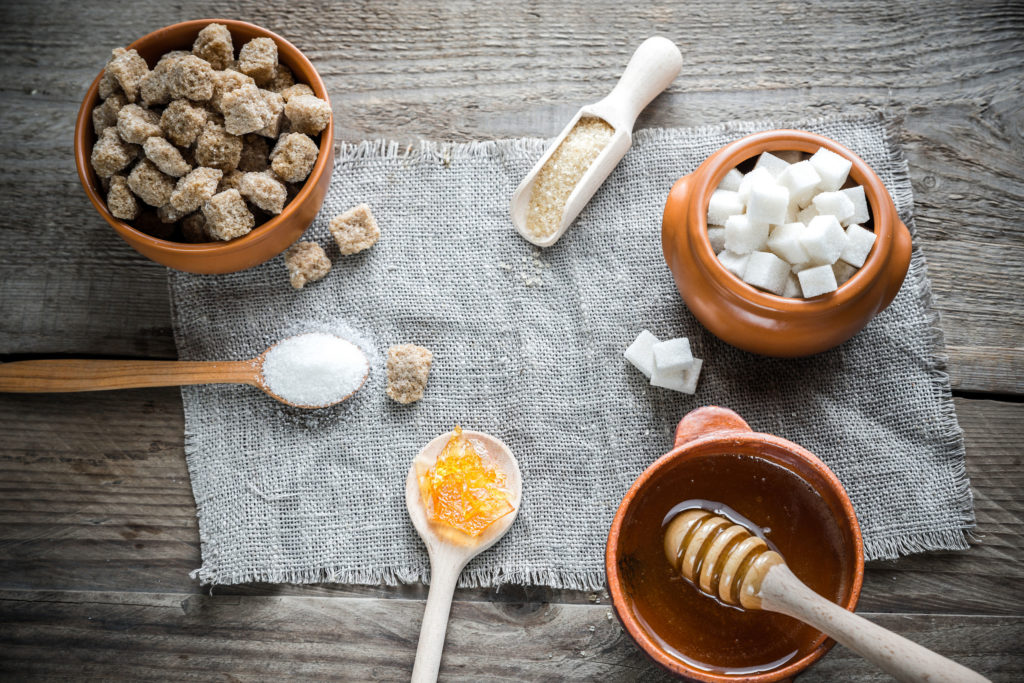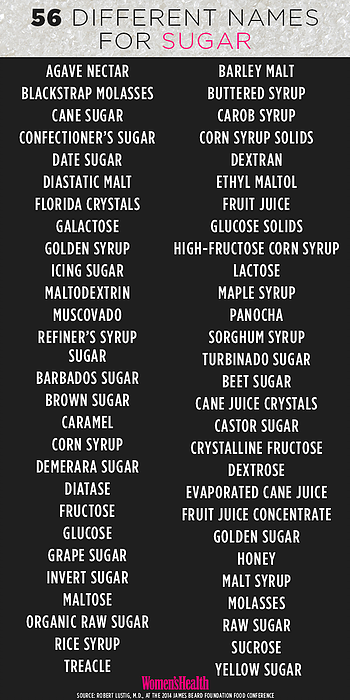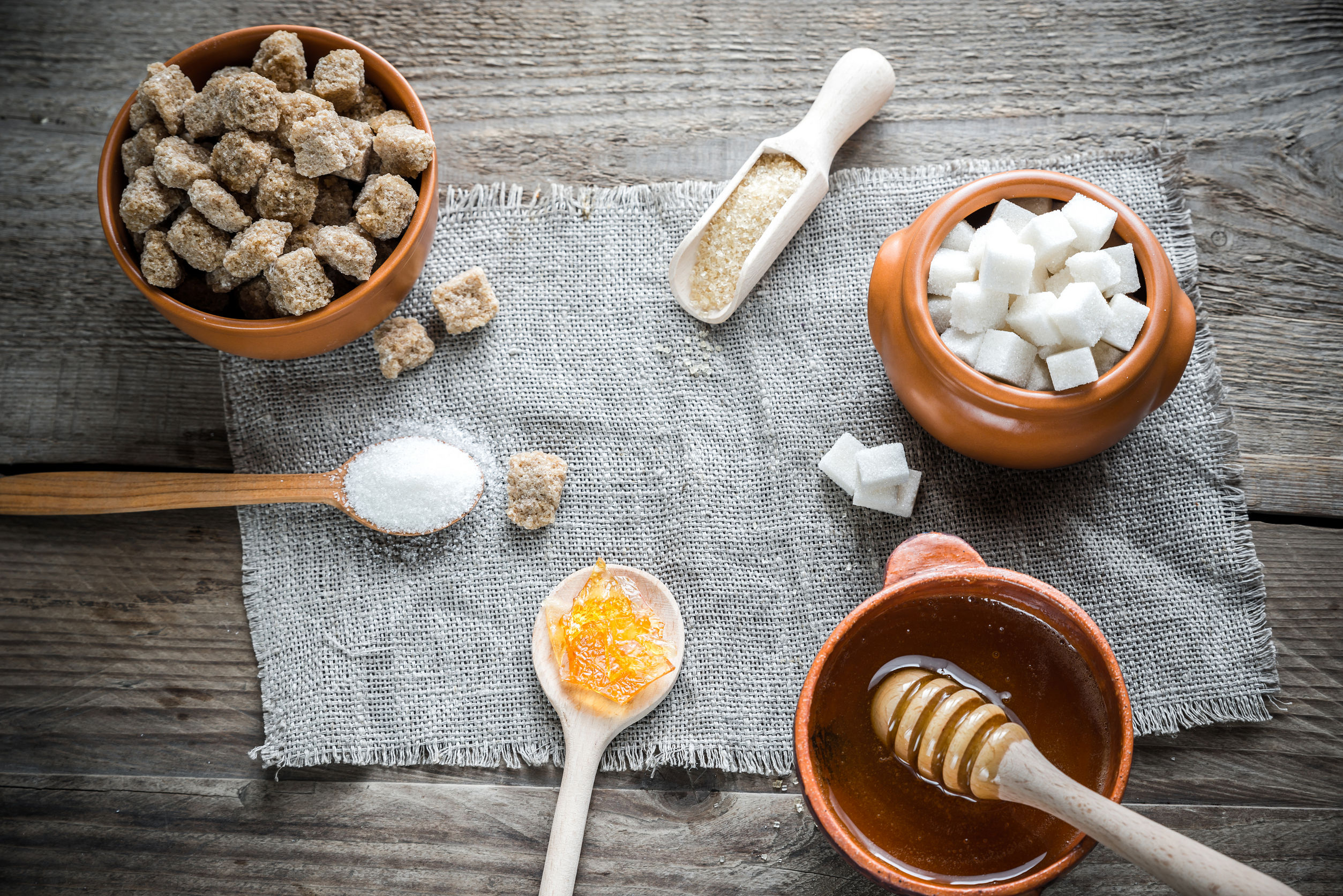
Despite all your best intentions with anti-inflammatory organic foods, supplements, stress, sleep, and exercise, if sugar is still sneaking into your diet it is probably why you are still struggling with inflammation and challenging symptoms.
Sugar is such an important piece to the inflammation puzzle. This is why I call it the limiting factor. In my experience, sugar is the #1 thing that has to change before we can really shift the inflammation cascade and begin to resolve symptoms.
In this post I want to explore what sugar is actually doing in your body and why it can be such a problem. I also want to leave you with some take-home tools of how you can take a hard look at your sugar consumption and take steps to shift it.
First though, when I say sugar, what does that mean to you? What comes to mind first? Let’s make sure we’re all on the same page. Here are some examples of sugars; some obvious and others perhaps not so obvious.
- Sweet Treats: candy, cookies, cakes, pastries, brownies, etc.
- Sugar-Sweetened Beverages: soda, fruit juice, energy drinks, etc.
- Packaged Products (with added sugar): salad dressings, condiments, sauces, cereal, bread, graham crackers, granola bars, flavored yogurt, etc.
- Natural Sugars: dried fruit, honey, maple syrup
- Refined, Processed Carbohydrates: white bread, white rice, white pasta, crackers, etc.
What’s Happening In The Body
Do you know what happens in your body when you eat sugar?
Your body is equipped to handle small amounts of sugar; ideally from natural whole food sources (like fruit, starchy veggies, and whole grain carbohydrates). But most of us are not keeping our sugar intake to just small amounts. And the level of sensitivity to sugar will vary a lot from person to person, which influences the effect sugar has on your body. That said, there are some basic physiological changes that happen to everyone and that’s what I want to explore today.
When you digest sugar (see list above), enzymes in your gut help to break it down into glucose, dextrose, or fructose where it is then absorbed in the small intestine and into your bloodstream. From there it is transported into tissue cells for energy. Mind you the energy boost is short-lived and is generally followed by a crash. Thus the desire to keep eating more and more to keep your energy “up”.
If you eat more sugar than you need for immediate energy, the excess will be processed by the liver and stored as fat. Throughout time this was a benefit because you would use this stored sugar for energy at a later time, when food was scarce. However, for most of us, a lack of food is no longer the problem.
In addition to providing energy, when you eat sugar, the brain releases hormones that boost your mood and trigger reward pathways. This is a similar process that leads to drug addiction, which is why you get those (intense) cravings. It’s not just will-power. There really are hormones and brain chemicals at play here. Unfortunately though when you give into those cravings and continue to consume sugar on a regular basis, the cravings only get worse as you “need” even more sugar to get that same mood/reward boost.
Sugar & Inflammation
What happens over time?
When you continue to eat more sugar than your body can use, you unfortunately set the stage for many different chronic diseases; many of which are fueled by inflammation.
- Fat builds up in the liver and metabolic pathways become disrupted, leading to fatty liver or Type 2 Diabetes.
- Inflammation climbs body-wide, which increases your risks for certain cancers (breast, colon, esophageal, small intestine) and heart disease. We now know that sugar is actually a bigger culprit in heart disease than fat and this fact was hidden from us for many years. You can read more about this sugar scandal here and here. You can read more about the relationship between Sugar & Cancer here.
- Your microbiome becomes disrupted and sets the stage for a leaky gut.
- As inflammatory cytokines circulate through the blood stream, your brain also becomes inflamed leading to poor cognition, depression, anxiety, or even increasing risk for Alzheimer’s.
- In my own practice, I see time and again how sugar directly increases pain and swelling in patients with arthritis or other musculo-skeletal inflammatory conditions.
How Much Are You Eating
 The World Health Organization recommends 24 grams or less of added sugars each day. If you consider that there’s 4 grams of sugar in each teaspoon; this means 6 tsp or less per day. Now consider that the average American eats 22 teaspoons, or 88 grams of sugar each day!
The World Health Organization recommends 24 grams or less of added sugars each day. If you consider that there’s 4 grams of sugar in each teaspoon; this means 6 tsp or less per day. Now consider that the average American eats 22 teaspoons, or 88 grams of sugar each day!
My job is to help make it easier for you to bring this number closer to the goal; or better yet below the goal!
The first step is to take an unbiased look at how much sugar you’re actually getting each day. The crazy truth is that sugar is added to just about everything!! When you really start looking; it’s everywhere.
I suggest you keep a log and track how many foods with added sugars you’re actually choosing each day; make sure to include natural sources too, like dried fruits, honey, or maple syrup.
The Nutrition Facts Label now makes this even easier for you with its new “Added Sugars” line. You may still need to look some things up but it’s totally worth the information you’ll gain.
I like using the Nutrition Data tracker to look up the nutrient content for different foods. If you can, try to track a whole week as most people tend to choose different foods on week-days versus week-ends.
Also keep in mind that there are literally dozens, if not hundreds, of different names for sugar on an ingredients label. In general though, anything ending in -ose is a sugar.
Take Home Message
Although the initial energy and mood boost you get from sugar is appealing and of course keeps you coming back for more, it is short-lived and in the long-term does much more harm than good; particularly when your goal is to lower inflammation or prevent cancer.
It is possible to curb sugar addiction and get added sugars out of your life BUT you first need to bring awareness to all the different ways it’s currently getting into your body. Start with a self-assessment, clean out your pantry, and review labels at the grocery store.
If you really want to geek out over sugar and the research, I LOVE the SugarScience website at UCSF.
In the next couple weeks we will look at how you can choose healthier substitutes plus implement concrete strategies to address sugar addiction and better manage your cravings. You can read more HERE (Substitute, Don’t Deprive) & HERE (5 Steps To End Sugar Addiction).
